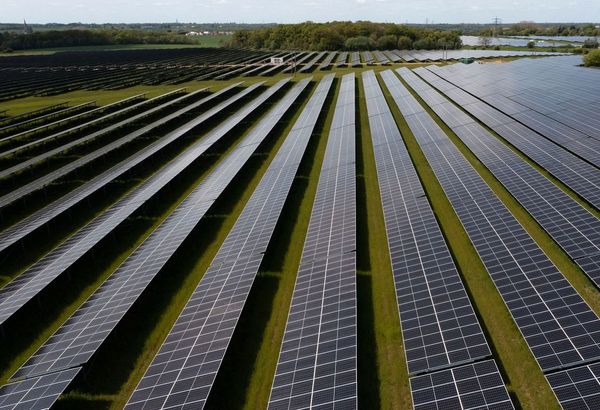
Climate change is one of the most pressing issues of our time. As we face the challenges of a changing climate, it is crucial to explore innovative solutions that can help mitigate its impacts. One such solution is the use of artificial intelligence (AI) technology.
AI has the potential to revolutionize the way we tackle climate change. By analyzing massive amounts of data and identifying patterns, AI can provide valuable insights and make informed decisions. This technology can be applied in various sectors to drive sustainable practices and reduce greenhouse gas emissions.
Enhancing Energy Efficiency
Energy consumption is a major contributor to climate change. AI can play a significant role in improving energy efficiency. By analyzing data from smart grids, buildings, and transportation systems, AI algorithms can optimize energy usage and reduce waste. For example, AI can automatically adjust heating and cooling systems in buildings based on occupancy patterns, resulting in substantial energy savings.
Advancing Renewable Energy
Renewable energy sources such as solar and wind power are crucial in reducing our reliance on fossil fuels. AI can enhance the efficiency and effectiveness of renewable energy systems. AI algorithms can predict weather patterns and optimize the operation of renewable energy infrastructure accordingly. This can lead to increased renewable energy generation and better integration into existing power grids.
Optimizing Resource Management
Efficient resource management is vital for sustainable development. AI can help optimize resource allocation and minimize waste. For instance, AI-powered precision agriculture can analyze data from sensors and satellites to provide farmers with real-time information about soil conditions, water usage, and crop health. This allows farmers to optimize their farming practices, reduce water and fertilizer usage, and increase crop yields.
Enhancing Climate Modeling and Prediction
Accurate climate modeling and prediction are crucial for understanding the impacts of climate change and developing effective adaptation strategies. AI can analyze vast amounts of climate data and improve the accuracy of climate models. This can help scientists and policymakers make informed decisions and take proactive measures to mitigate the effects of climate change.
Conclusion
The power of AI in addressing climate change is immense. By leveraging the capabilities of AI technology, we can make significant progress in reducing greenhouse gas emissions, promoting sustainable practices, and adapting to a changing climate. It is essential that we harness the potential of AI and work together to create a more sustainable and resilient future for generations to come.

Tomato growers in central India have been increasingly concerned about the impact of extreme weather events on their crops. Severe droughts over the past decade have led to significant crop loss, affecting the livelihoods of local farmers.
However, Silicon Valley startup ClimateAi is using artificial intelligence (AI) to evaluate the vulnerability of crops to warming temperatures. Their AI platform analyzes climate, water, and soil data to determine the viability of different locations for farming in the coming years.
In a case study conducted in Maharashtra, India, ClimateAi simulated the effects of extreme heat and drought on tomato production. The results showed that there would be a 30% decrease in tomato output over the next two decades. Armed with this information, tomato growers adjusted their business plans by choosing more climate-resilient seed varieties and changing planting times. This quick response saved time and cost for the farmers.
AI technology has the potential to address various aspects of the climate crisis. It can contribute to reducing pollution, improving weather models, and speeding up scientific discoveries related to climate change.

AI’s ability to process large amounts of data and identify patterns makes it valuable for forecasting and running simulations. It can accelerate scientific discoveries and optimize decision-making in various domains, from understanding molecules to addressing climate change.
However, the infrastructure supporting AI, such as data centers, can have a negative impact on the environment due to their energy consumption. Balancing the benefits of AI with its environmental impact is crucial. Collaboration between software engineers and climate scientists is necessary to find sustainable solutions.
Artificial intelligence is not meant to replace humans in the fight against climate change but to enhance their work. For example, AI algorithms can help researchers identify the best locations for coastal restoration efforts by considering factors like water toxins and disruptions.
In the Arctic, where temperatures are rising rapidly, AI is being used to make permafrost forecasts on a seasonal timescale. This provides a better understanding of the speed at which the Arctic is melting, which is essential for predicting global climate patterns.
AI also plays a role in renewable energy. By analyzing weather forecasts and historical data, AI models can predict the availability of wind power, making it more valuable for wind farmers. It can also help grid operators anticipate energy demand and optimize the supply of renewable energy sources.
To fully harness the potential of AI in addressing climate change, it is important to integrate renewable energy capacity into existing grids and optimize consumer demand and supply for renewables in real-time.
Artificial intelligence has become a valuable tool in the fight against climate change. Its ability to process data, identify patterns, and make predictions can accelerate the development of sustainable solutions. By harnessing the power of AI, we can work towards a more climate-resilient future.

Artificial intelligence (AI) is revolutionizing the fight against climate change. With its computational power, AI is being used to research materials that can recapture carbon from the atmosphere and to model and forecast major floods, helping local governments prepare for potential emergencies. The potential of AI in addressing climate change is immense, but it is important to strike the right balance.
The Energy Challenge
Running AI models requires a significant amount of energy, and many data centers still rely heavily on fossil fuels for their operations. Additionally, data centers require water for cooling, which is a dwindling resource. While the current energy consumption of AI is relatively small compared to transportation or buildings, it is expected to grow rapidly in the future. This calls for cautious consideration of the environmental impact of AI before it grows exponentially.
An October study estimated that Google’s AI systems could consume as much electricity as the entire country of Ireland each year, assuming full-scale adoption of AI on their current hardware and software. This highlights the need for developers to critically evaluate the necessity of using AI in every application. The benefits must outweigh the costs.
Addressing Environmental Concerns
Data center operators are already taking steps to address the environmental impact of AI. Amazon Web Services, for example, has committed to being “water positive” by 2030. They aim to return more water to communities than they use in their data center operations. In drought-stricken areas like Oregon, AWS provides spent water used for cooling to local farmers for irrigation.
Strategic placement of data centers can also minimize resource consumption. Building data centers in colder regions reduces the need for water cooling. Scandinavian countries, with their robust availability of renewable energy sources, have become popular locations for data centers.
Regulatory Considerations
Lawmakers and regulators need to consider both the potential benefits of AI in fighting climate change and its environmental impact. As the AI industry continues to grow, it is crucial to not only focus on the software and tools but also on how data centers are operated. Developing regulations that promote sustainability and responsible AI practices is essential.
Making AI Accessible
AI must also be made accessible and affordable, especially for low-income nations in the Global South that are most affected by the climate crisis but contribute the least to global pollution. Expanding resources and ensuring equal access to AI technology can have a profound impact on businesses and humanity as a whole.
In conclusion, AI has tremendous potential in addressing the climate crisis. However, it is crucial to consider the environmental impact of AI and take steps to minimize resource consumption. By making AI accessible, affordable, and sustainable, we can harness its power to create a positive impact on the planet.




